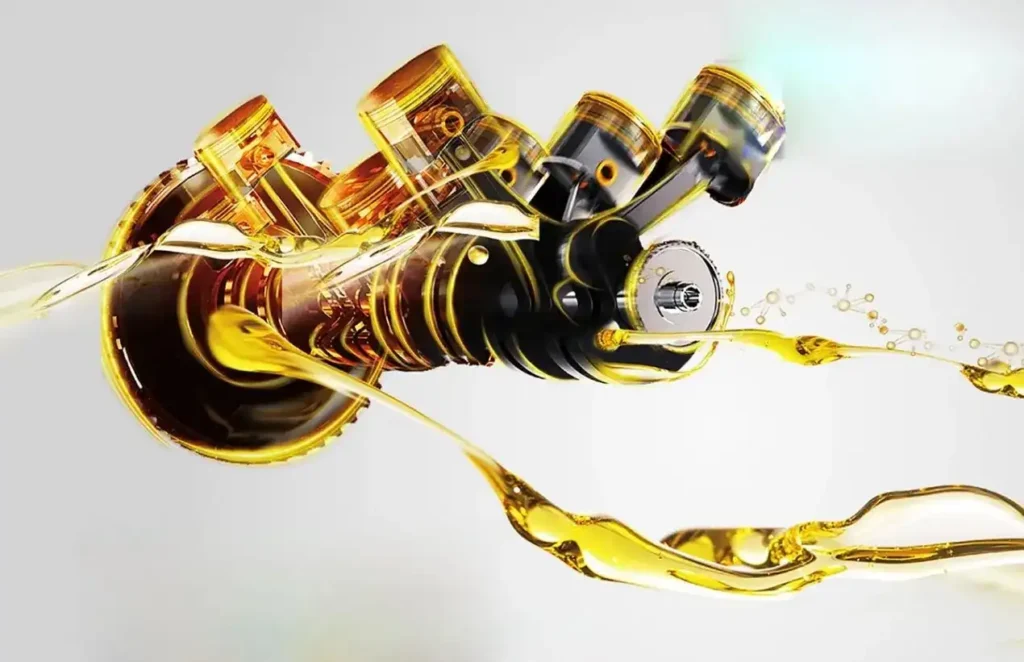Lubricating oil detergent is an essential additive in various types of internal combustion engine oils. It is a colloidal dispersion system formed by a large number of nanoparticles (generally inorganic alkaline compounds) and surfactants dissolved in diluent oil. The surfactants in the dispersion system have the functions of cleaning, dispersing, solubilizing and peptizing, which can inhibit the serious pollution caused by incomplete combustion of fuel and oxidation of lubricating oil in internal combustion engines; the alkaline nano components can effectively neutralize the harmful organic acids and inorganic acids generated by fuel and lubricating oil during use, slow down the oxidation process of oil products, and reduce the corrosion and wear of the engine, extending the service life of oil products and engines.

The metal carbonate in the colloid core that provides alkaline reserves should be nanometer-level. The preparation and application of nanopowders is a branch of nanotechnology. Many nanopowders, especially inorganic salts and metal oxide nanopowders, are very easy to aggregate due to their huge surface energy, which in turn affects the application performance. Modification with surfactants to reduce surface energy is an important means to inhibit the aggregation of nanopowders. The lubricating oil detergent dispersant adopts the preparation process of nano magnesium carbonate. The product is a nano magnesium carbonate oil-soluble dispersion system modified by petroleum magnesium sulfonate, which has excellent detergent dispersant, thermal oxidation stability and colloidal stability.
Since the metallic property of magnesium is not as good as that of calcium, the carbonation process of nano magnesium carbonate is more difficult than that of calcium salt in the preparation of lubricating oil detergent dispersant. Moreover, because nano particles have a large specific surface area, they often agglomerate into secondary particles to form the so-called “jelly”. With the continuous development of various accelerators, the one-step process gradually replaces the two-step process and the multi-step process. Various methods are preliminarily investigated and compared to determine the final process route.
In terms of reaction mechanism, since the solubility products of magnesium hydroxide and magnesium carbonate in water are 1.8×10-11 and 3.5×10-8 respectively, the concentrations in water are 1.7×10-4 and 1.871×10-4 mol/L respectively, which are close in value. The magnesium hydroxide in the floc is not easy to be converted into magnesium carbonate.
If water is added first during the formation of the normal salt surfactant, a lot of magnesium hydroxide will be generated, and due to the effect of hydrogen bonding, magnesium hydroxide is easy to aggregate into larger particles, or even condense into precipitation, increasing the viscosity of the product, deteriorating the stability of the colloid, and having a great impact on the performance of the product.
On the other hand, a unique way of adding water is used during carbonation. The generated magnesium hydroxide reacts with carbon dioxide to form magnesium carbonate before associating with each other, and is dispersed into the oil phase to form micelles, thereby ensuring the size of the micelles and the performance of the product.
The main applications of magnesium carbonate in lubricating oil purification dispersants are:
- Control the formation of sludge and sediment:
Magnesium carbonate is an alkaline additive that neutralizes acidic substances, including organic acids and inorganic acids. These acidic substances can cause sludge and sediment to form, reducing the performance of the lubricating oil. Magnesium carbonate prevents their formation and maintains the cleanliness of the oil by neutralizing these acidic substances. - Stabilizing emulsifier:
Lubricating oil purification dispersants usually contain emulsifiers to help keep dirt and water dispersed in the oil. Magnesium carbonate stabilizes emulsifiers, preventing them from breaking down, thus ensuring that the emulsifier works effectively. - Improved Dispersibility:
Magnesium carbonate improves the dispersibility of dirt and water in lubricants. By keeping these contaminants in a dispersed state, they are prevented from agglomerating and forming sediments. - Extended Oil Life:
By controlling the formation of sludge and sediments, stabilizing emulsifiers and improving dispersibility, magnesium carbonate helps extend the life of lubricants. Cleaner oil reduces wear, extends equipment life and reduces maintenance costs.
Precautions for Use
The following precautions need to be taken when using magnesium carbonate:
Concentration: The optimal concentration of magnesium carbonate depends on the lubricant type and application. Too high a concentration can cause sludge formation.
Particle Size: The particle size of magnesium carbonate affects its effectiveness. Smaller particle sizes provide a larger surface area, which improves reactivity.
Storage: Magnesium carbonate should be stored in a cool, dry place. Prolonged exposure to air will absorb moisture, reducing its effectiveness.

